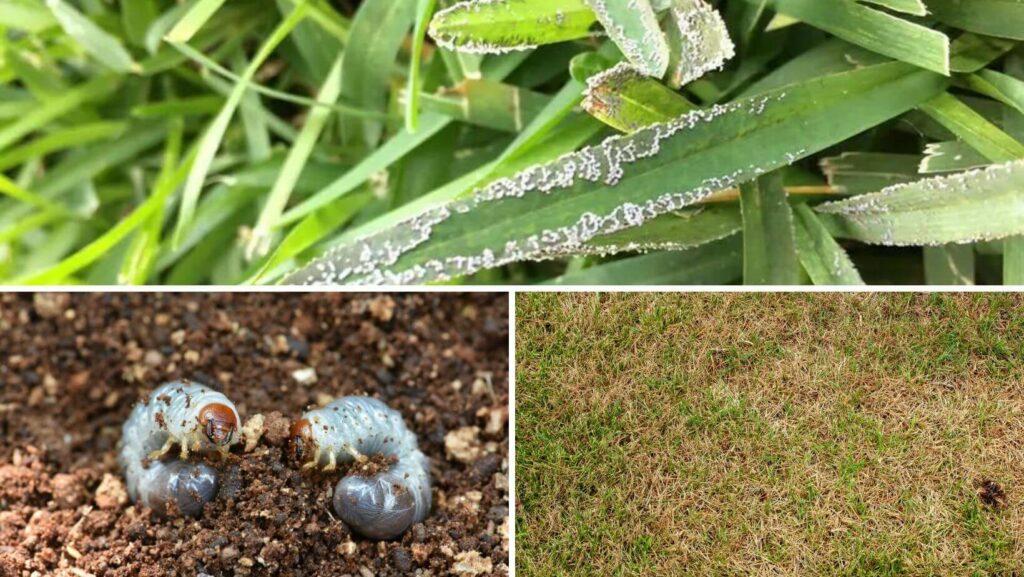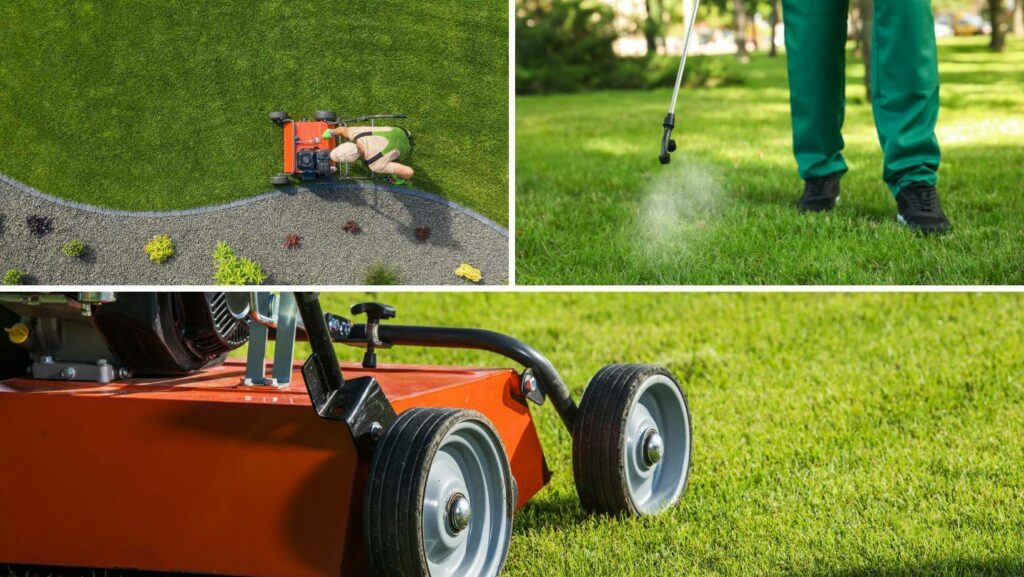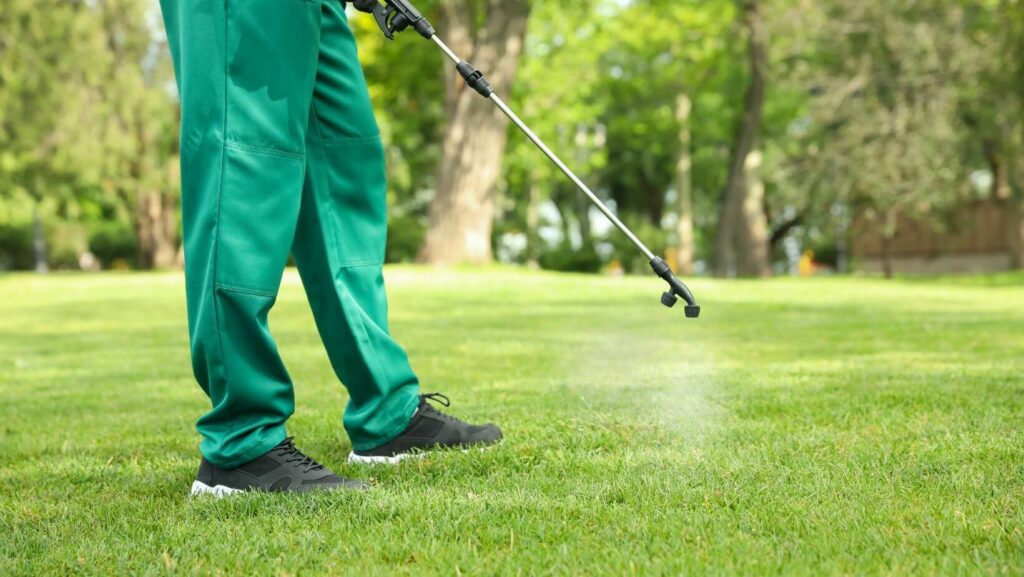Say goodbye to pesky lawn pests and troublesome diseases with Turfcor Lawn & Tree Care. Our experienced professionals have the knowledge and tools to diagnose and tackle any lawn-related issue. From grubs and chinch bugs to brown patch and more, we provide tailored treatment plans and sustainable practices to revive your lawn's vitality. Take charge of your lawn's well-being today! Contact Turfcor Lawn & Tree Care and experience the difference for yourself.
Given the diverse climate and soil conditions across Pennsylvania, homeowners in our beautiful state must be prepared to manage a variety of lawn pests and diseases throughout the year. With the right knowledge and tools, you can prevent or minimize damage caused by these garden invaders.
This article provides detailed information about common lawn pests and diseases that are specific to Pennsylvania, as well as prevention techniques and treatments designed for successful pest management.
Identifying Common Lawn Pests and Diseases in Pennsylvania
 Pennsylvania’s diverse climate and geographical features create an environment conducive to the emergence of various lawn pests and diseases during the summer months. To effectively manage these issues, it’s crucial to be able to identify the common culprits. One common lawn pest in Pennsylvania is the grub, which is the larvae of beetles such as the Japanese beetle and masked chafer. Grub infestations can cause significant damage to lawns, resulting in brown patches and wilting grass. Chinch bugs are another notorious pest in the region.
Pennsylvania’s diverse climate and geographical features create an environment conducive to the emergence of various lawn pests and diseases during the summer months. To effectively manage these issues, it’s crucial to be able to identify the common culprits. One common lawn pest in Pennsylvania is the grub, which is the larvae of beetles such as the Japanese beetle and masked chafer. Grub infestations can cause significant damage to lawns, resulting in brown patches and wilting grass. Chinch bugs are another notorious pest in the region.
These tiny insects feed on grass, causing yellowing and dead patches in lawns. Pennsylvania lawns are also susceptible to diseases like brown patch, characterized by circular, brownish patches with a dark border, and dollar spot, which causes small, silver-dollar-sized patches of dead grass. Powdery mildew, a fungal disease, can also affect lawns, resulting in a white, powdery coating on grass blades. By being able to recognize these common pests and diseases, homeowners can take timely action to prevent their spread and minimize damage to their lawns.
Prevention Strategies for Common Lawn Pests and Diseases
 One of the most essential aspects of maintaining a healthy and lush lawn is preventing the emergence of pests and diseases. Taking proactive measures can save you both time and money in the long run, and ensure your lawn remains healthy and vibrant throughout the year. By maintaining proper lawn care practices such as regular mowing, watering, and fertilization, you can significantly reduce the risk of pest infestations.
One of the most essential aspects of maintaining a healthy and lush lawn is preventing the emergence of pests and diseases. Taking proactive measures can save you both time and money in the long run, and ensure your lawn remains healthy and vibrant throughout the year. By maintaining proper lawn care practices such as regular mowing, watering, and fertilization, you can significantly reduce the risk of pest infestations.
Aerating and dethatching lawns also promotes proper airflow and root growth, making it harder for pests to take hold. When selecting plants for your lawn, consider their susceptibility to diseases and place them accordingly. Finally, organic or natural pest control methods can be an effective way to maintain a healthy ecosystem in your yard. By following these prevention strategies for common lawn pests and diseases, you can keep your lawn looking its best year-round.
Enjoy A Pest-Free and Disease-Free Lawn
Effective Control Methods for Common Lawn Pests and Diseases
 As a homeowner in Pennsylvania, managing lawn pests and diseases can be a daunting task. However, there are effective control methods that can be implemented to manage and eradicate these pesky invaders. Insecticides can be particularly useful in combating pests like grubs and chinch bugs. There are both chemical and organic options available that can be used to effectively combat these pests.
As a homeowner in Pennsylvania, managing lawn pests and diseases can be a daunting task. However, there are effective control methods that can be implemented to manage and eradicate these pesky invaders. Insecticides can be particularly useful in combating pests like grubs and chinch bugs. There are both chemical and organic options available that can be used to effectively combat these pests.
The application of fungicides and other treatments can be effective in controlling diseases like brown patch and dollar spot. Along with these treatments, cultural practices, such as overseeding and proper irrigation, can also help to promote recovery and prevent re-infestation.
It is important to remember that severe infestations or diseases may require the assistance of turf professionals, so do not hesitate to seek out help when needed. By implementing these effective control methods, Pennsylvania homeowners can easily manage and prevent lawn pests and diseases.
Keeping your Lawn Pest and Disease Free
Maintaining a healthy lawn is no easy task, especially when it comes to dealing with common pests and diseases in Pennsylvania. However, neglecting these issues can lead to troublesome consequences such as brown patches, wilted grass, and unsightly damage. In order to prevent and control these issues, there are several key strategies that all lawn owners should be aware of.
These include proper mowing, watering, and fertilization as well as identifying and treating any signs of a pest or disease. Seeking professional assistance can also be incredibly helpful in ensuring a lush, pest-free lawn. By taking proactive steps, lawn owners can create an environment that is not only aesthetically pleasing but also beneficial for the local ecosystem. Let’s work together to achieve a healthy lawn and share our experiences and tips for managing common lawn pests and diseases in Pennsylvania.